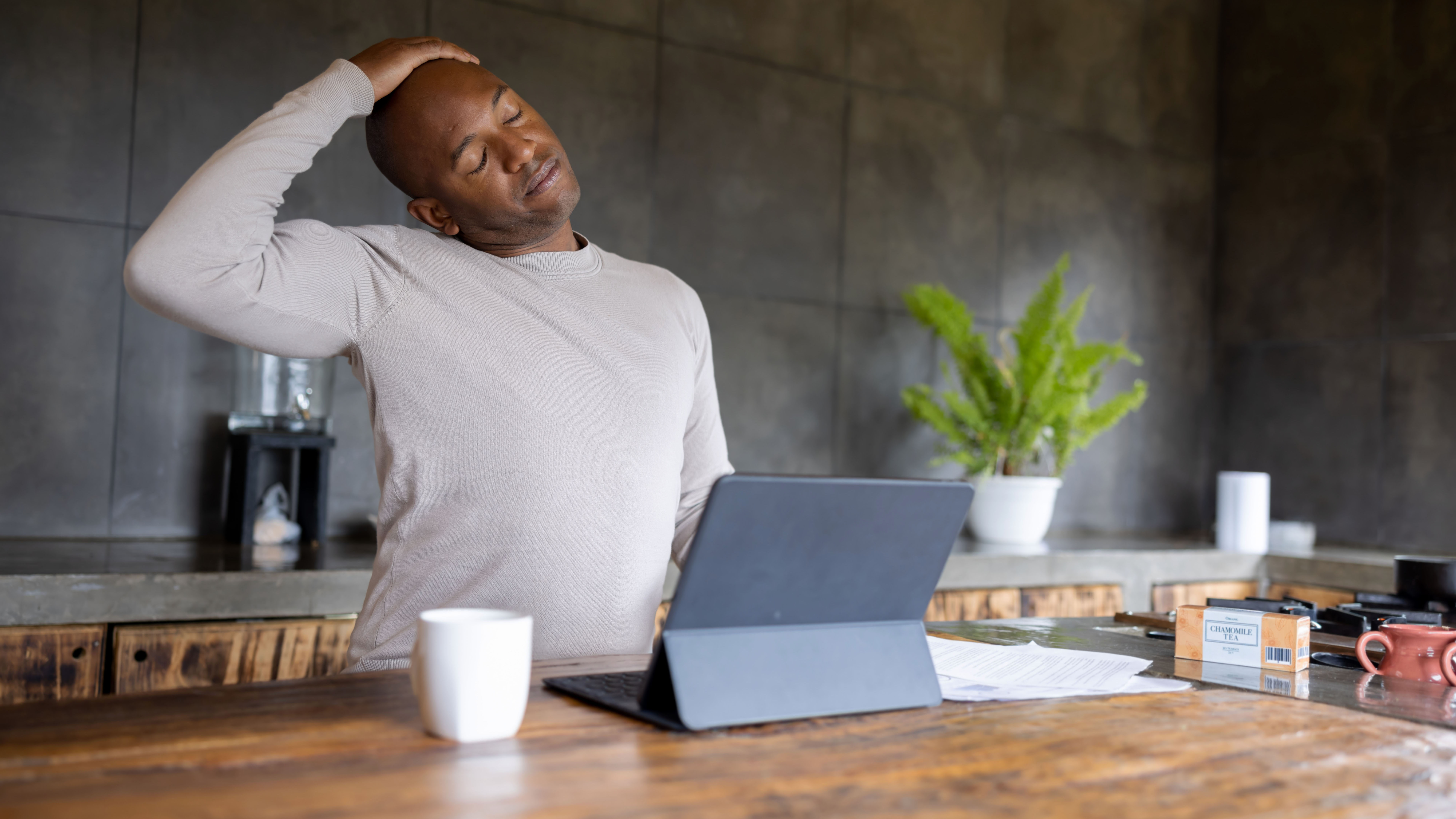Increase your flexibility at any age with these five physical therapist-approved stretches
A physical therapist shares the five stretches he gives to nearly everyone to fix their posture, gait and flexibility


Physical therapists often use a catchy phrase as a way of encouraging you to move more and sit less—“motion is lotion”.
“We lose flexibility as we age,” says physical therapist Dr Robbie Mann, mideast regional director at FYZICAL.
“We do so because our bodies adapt to our lifestyles and our work, so we naturally develop strengths, weaknesses and stiffness, or lack of flexibility, due to what we do on a daily basis.”
Aging can also impact our joints, making them feel stiff and changing how we move, but exercising more and sitting less can help slow down this process.
Mann says that dedicated stretching sessions can also help your flexibility at any age and reduce your risk of injury.
“These five specific exercises target the primary areas of muscle and joint stiffness that we [most regularly] treat in physical therapy,” he says.
1. Thoracic/lumbar rotation stretch
Sets: 3 Time: 2min each side
Start your week with achievable workout ideas, health tips and wellbeing advice in your inbox.
- Lie on your right side with your knees bent and arms extende in front of you.
- Lift your left arm up and over to the right side, rotating your upper body to the left.
- Hold this stretch for up to two minutes.
- Repeat on the other side.
Mann says this stretch can have a positive impact on our posture, particularly for desk workers who spend a lot of time with their shoulders hunched and spine curved forward.
2. Hip flexor stretch
Sets: 3 Time: 2min each side
- Lie on a bed with the left side of your body near the edge.
- Bend your left knee and hang your leg off the side of the bed.
- Hold this for up to two minutes, then switch sides.
Mann says that prolonged sitting can tighten your hip flexors, which impacts everything from how you walk to your posture when you stand still. Stretching these muscles regularly can help reverse the damage.
3. Calf stretch
Sets: 3 Time: 30sec each side
- Stand in front of a wall.
- Step your left leg back, keeping it straight. Maintain a slight bend in the right knee.
- Lean forward and touch the wall, so you feel a stretch in your left calf.
- Hold for 30 seconds, then switch sides.
“Tight calves are linked to shuffling our feet and decreased balance stability,” says Mann.
Keeping these muscles flexible will help you maintain your natural gait.
4. Piriformis stretch
Sets: 3 Time: 30sec-2min each side
- Lie on your back with your knees bent and feet flat on the floor.
- Lift your left foot and cross your left ankle over the right knee.
- Take hold of the back of your right thigh in both hands, and gently pull your right knee towards your chest.
- Hold this stretch for up to two minutes, then switch sides.
“This muscle [in the buttocks] can become short with prolonged periods of sitting,” Mann explains.
“Stiffness in this muscle can limit our ability to execute a deep squat, lunge and cross our legs. The piriformis muscle can be a contributing factor to sciatica, as well.”
5. Upper trapezius muscle stretch
Sets: 3 Time: 20-30sec each side
- Sit upright in a chair and hold the bottom of the seat with your left hand to anchor your torso.
- Lean your neck away, tilting your ear towards your right shoulder
- To deepen the stretch, you can place your right hand on your head. However, this stretch shouldn’t be forced if it causes pain.
- Hold for 20-30 seconds, then repeat on the other side.
“The upper trapezius is chronically tight on almost everyone, but especially on those who spend a lot of time sitting for work,” says Mann.
If left unresolved, the physical therapist says a tight upper trapezius can contribute to poor posture, neck pain and headaches.
Was this useful?
If you’d like to see Fit&Well more often when you’re browsing Google News, you can set Fit&Well as a preferred source (when you’re logged in to your Google account). Here’s more about Google’s preferred sources and step-by-step instructions for how to add Fit&Well.
Becks is a freelance journalist and writer with more than 7 years of experience in the field. She writes health and lifestyle content for a range of titles including Live Science, Top Ten Reviews, Tom’s Guide, Stylist, The Independent, and more. She also ghostwrites for a number of Physiotherapists and Osteopaths.
Health has been a big part of Becks’ lifestyle since time began. When she’s not writing about the topic of health, she’s in the gym learning new compound exercises. And when she’s not in the gym, she’s most probably reading.
You must confirm your public display name before commenting
Please logout and then login again, you will then be prompted to enter your display name.





